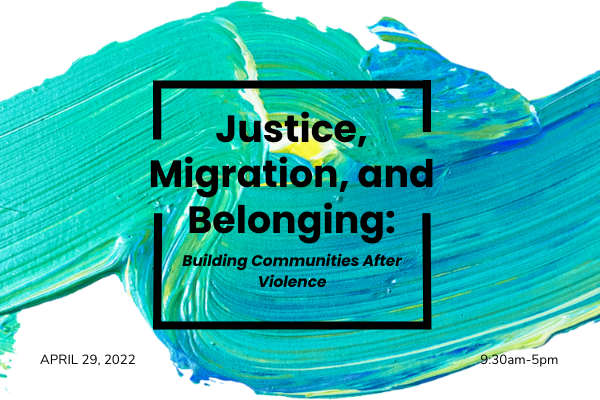
Overview
The Conflict to Peace Lab at the Mershon Center for International Security Studies is pleased to host this virtual workshop-style conference, taking place April 29 from 9:30 a.m. to 5:00 p.m., to bring together an interdisciplinary group of scholars to study the lasting impact of conflict on communities around the world.
With political violence impacting communities every day and contributing to the displacement of 26.3 million refugees as of mid-2020, this theme considers the implications for transitional justice, reintegrating displaced communities, and the politics of movement and belonging as critically important to studies of post-conflict reconstruction and peacebuilding. This conference provides an interdisciplinary space to understand the challenges that violent conflict poses to community integration and social cohesion, and how international movements towards justice and en masse migration create (or disrupt) local networks of peace. Panelists include Dr. Kate Cronin-Furman on the challenges of seeking justice after violence, Dr. Kelebogile Zvobgo on memory production via memorialization projects, and Dr. Sophia Seng on the Cambodian diasporic community building in the aftermath of the Khmer Rouge genocide, and others.
Apply to be a Graduate Conference Scholar
We invite Ohio State graduate students to apply as a conference scholar. A great opportunity to network and learn directly from faculty in the peace and conflict space from other universities and create community with other graduate students at Ohio State working in the field. Conference scholars will be expected to attend the entire day-long workshop and write a short reflection connecting conference presentations with policy implications for communities recovering from conflict and violence to be published on the Mershon Center’s website. For their participation and eventual blog post, conference scholars will receive $150. Payment is contingent on approval from the scholars’ home department and graduate school prior to the event.
To join us as a conference scholar, please email a CV and short statement of interest (~250 words) to mershoncenter@osu.edu. In your statement of interest, please note how your research interests align with the conference theme noted above. In the subject of your application, please write JUSTICE, MIGRATION, and BELONGING. The application deadline is April 22 at 5 p.m.
